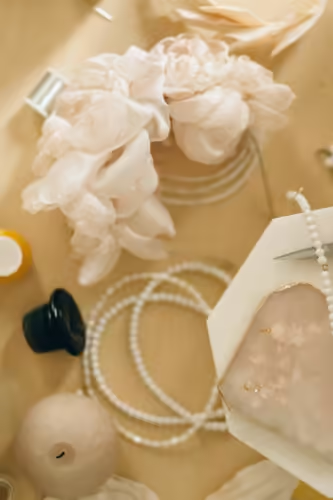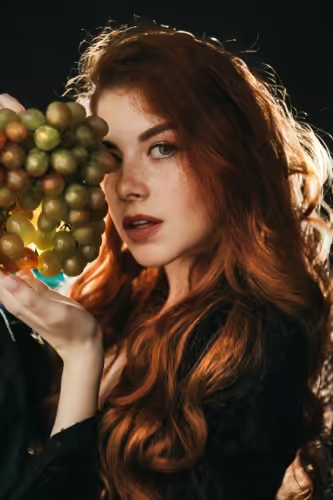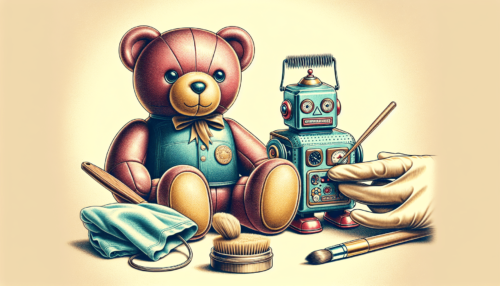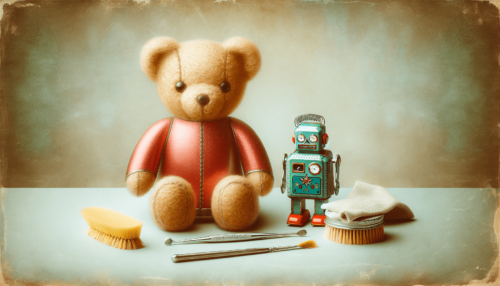How can one clean and restore vintage toys without damaging them?
Table of Contents
Overview
Vintage toys hold a special place in the hearts of collectors and enthusiasts alike. These cherished items often come with a blend of nostalgia and historical significance, making them valuable both sentimentally and financially. Ensuring the integrity and safety of these toys during cleaning and restoration processes is, therefore, paramount. This article provides practical and professional tips for safely cleaning and restoring vintage toys. The goal is to maintain their value without compromising their structure or aesthetics.
Historical Context
The practice of collecting vintage toys dates back centuries, with certain items gaining prominence as collectible antiques. For example, tin toys from the late 19th century, made by companies like Lehmann and Bing, are now highly sought after. Similarly, dolls from the early 20th century by manufacturers such as Steiff and Madame Alexander also hold substantial value. Understanding the historical context of these toys can help in applying the appropriate cleaning and restoration techniques.

This image is property of images.pexels.com.
Current Trends
In recent years, there has been an increasing interest in the restoration of vintage items, fueled by the rise of online marketplaces and antique-themed television programs. Collectors are more knowledgeable and discerning, seeking out toys in original or near-original condition. Consequently, applying careful and correct methods is essential. Products specifically designed for antique restoration are now more accessible, making the process less daunting for collectors.
Key Concepts and Definitions
Understanding Materials
Vintage toys are made from various materials, each requiring specific care. Common materials include:
- Tin: Often used in mechanical toys and vehicles.
- Plastic: Seen in toys post-1950s, including action figures and dolls.
- Fabric: Predominantly used for stuffed animals and dolls.
- Wood: Common in older toys like blocks and puzzles.
- Rubber: Frequently found in dolls and some early action figures.
Assessing Condition
Before undertaking any cleaning or restoration, it’s crucial to assess the toy’s condition. Look for signs of:
- Rust or Corrosion: Common in metal toys.
- Cracks or Breaks: Especially in plastic or rubber toys.
- Deterioration: Fabric toys may show signs of wear and tear, such as fading, fraying, or holes.

This image is property of images.pexels.com.
Cleaning Techniques
Gentle Dusting
For all types of vintage toys, the first step is gentle dusting to remove loose dirt and debris.
- Soft Bristle Brush: Use a brush with soft, non-abrasive bristles to lightly dust the toy’s surface.
- Compressed Air: For hard-to-reach areas, a can of compressed air can be effective.
Cleaning Tin Toys
- Mild Soap Solution: Mix a small amount of mild dish soap with warm water. Dampen a soft cloth with the solution and gently wipe the toy. Avoid soaking the toy to prevent rusting.
- Rust Removal: For minor rust spots, use a mixture of baking soda and water to create a paste. Apply this paste to the rust spots and gently scrub with a cloth.
Cleaning Plastic Toys
- Soap and Water: Use a mild soap solution and a soft cloth to clean the surface.
- Cotton Swabs: For intricate areas, use cotton swabs dipped in the soap solution.
Cleaning Fabric Toys
- Vacuuming: Use a vacuum with a brush attachment to gently remove dust.
- Spot Cleaning: For small stains, use a mild detergent solution and a cloth to dab the area. Avoid soaking the fabric.
Cleaning Wood Toys
- Mild Detergent: Mix a solution of mild detergent with water and use a soft cloth to clean the surface.
- Sanding: For scratches or signs of wear, light sanding with fine-grit sandpaper can be useful.
Cleaning Rubber Toys
- Mild Soap Solution: Clean with a cloth soaked in mild soap solution.
- Isopropyl Alcohol: For tough stains, a small amount of isopropyl alcohol on a cotton swab can be used.
Restoration Techniques
Tin Toys
- Touch-Up Paint: For paint chips, use touch-up paint that matches the original color. Apply with a fine brush.
- Lubrication: For mechanical parts, a light application of machine oil can help improve functionality.
Plastic Toys
- Plastic Bonding: For cracks, use plastic bonding adhesive to repair and reinforce the structure.
- Color Restoration: Sunlight can cause plastic to yellow over time. Commercial plastic restorers can help restore the original color.
Fabric Toys
- Re-stuffing: Over time, fabric toys may lose their shape. Carefully open a seam, add stuffing material, and sew back up.
- Patch Repair: Use matching fabric to patch holes or worn areas. Sew carefully to maintain the toy’s integrity.
Wood Toys
- Glue Repairs: Use wood glue to reattach broken pieces.
- Repainting: If the paint is severely worn, consider repainting with appropriate, non-toxic paint.
Rubber Toys
- Re-painting: Like with plastic and tin, rubber toys can be touched up with paint that adheres well to rubber surfaces.
- Adhesive Repair: Use rubber adhesive to fix tears or breaks.

This image is property of images.pexels.com.
Example Cases
Example 1: Tin Toy – Vintage Car
A collector owns a 1930s tin car exhibiting rust spots and chipped paint. Initially, the car’s surface is gently dusted using a soft-bristle brush. Rust spots are treated with a paste of baking soda and water, applied gently to avoid scratching. Next, a dab of touch-up paint matching the original color is used to fix the paint chips. Finally, moving parts are lightly oiled to ensure smooth operation.
Example 2: Plastic Toy – 1970s Action Figure
A 1970s action figure has yellowed over time and shows light surface dirt. A mild soap solution and a cloth are used to clean the surface. For intricate details, cotton swabs are utilized. A commercial plastic restorer aids in bringing back the original color, significantly improving the figure’s appearance.
Different Perspectives on Restoration
Not all collectors agree on the extent of restoration that should be undertaken. Some purists believe toys should maintain their original, worn condition, as it adds to their authenticity and character. Others prefer toys to appear as close to their original condition as possible.
| Perspective | Description | Proponents’ Argument |
|---|---|---|
| Minimal Restoration | Minimal intervention, keeping the toy’s original condition intact. | Maintains authenticity and historical value. |
| Full Restoration | Significant restoration work to make the toy look new. | Enhances aesthetic appeal and could increase market value. |
| Functional Restoration | Focuses on making the toy functional rather than purely aesthetic improvements. | Ensures toys can be used or demonstrate their original mechanical features. |
| Custom Restoration | Alters the toy beyond its original specifications, often for creative purposes. | Can make the toys unique and personalized, though can lower original collector value. |

Impact Assessment
Economic Impact
The choice of restoration method can significantly affect the toy’s market value. Minimal restoration retains more historical authenticity, potentially appealing more to a niche market of purist collectors. Full restoration, although time-consuming and requiring specialized skills, can make a toy more attractive to a broader audience, possibly increasing its market value.
Historical Accuracy
Restoring vintage toys to their original condition not only preserves their own history but also contributes to the broader preservation of cultural history. Toys are more than playthings; they are cultural artifacts reflecting the era in which they were made.
Collector Preferences
Understanding the preferences within the collector community is critical. As noted, some collectors value authenticity and minimal intervention, while others may seek perfectly restored pieces. The collector community’s preferences can shift trends and influence the best practices in toy restoration.
Future Directions and Implications
Predictions
Given the growing interest in vintage collectibles, the market for professional restoration services is likely to expand. Advancements in technology, such as 3D printing and material science, could offer new methods for restoring old toys more precisely and safely. Products specifically designed for toy restoration could become more sophisticated, offering even better outcomes.
Implications
The growing awareness and appreciation of vintage toys have broader implications for the preservation of cultural heritage. By maintaining and restoring these toys, collectors help keep history alive, enabling future generations to learn about past eras through these tangible pieces of history.
Conclusion
Restoring vintage toys requires a delicate balance between maintaining historical integrity and improving aesthetic and functional qualities. Regardless of the method chosen, the ultimate goal is to preserve these cherished items for future enjoyment and appreciation.
In closing, what is your own approach to restoring vintage treasures? Do you lean towards maintaining their aged authenticity, or do you prefer breathing new life into them with more comprehensive restoration? Your perspective is a valuable part of this ongoing conversation.


